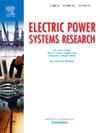具有混合储能的可再生微电网中可持续和智能能源管理的混合WbOA-APINN框架
IF 4.2
3区 工程技术
Q2 ENGINEERING, ELECTRICAL & ELECTRONIC
引用次数: 0
摘要
具有混合储能系统(HESS)的可再生集成微电网(mg)中的能源管理(EM)对于确保运行可靠性、减少排放和降低成本至关重要。然而,现有方法在动态条件下的适应性有限,预测精度降低,可再生利用率不足。为了克服这些局限性,本文提出了一种将Wombat优化算法(WbOA)与增强物理信息神经网络(APINN)相结合的混合框架。在该框架中,WbOA对HESS的配电和充放电操作进行最优调度,而APINN通过在学习过程中嵌入功率平衡和存储动态等物理约束来提高预测精度。仿真结果表明,WbOA-APINN方法优于PSO、GA和最近的混合模型等基准技术。具体来说,它实现了98.7%的系统效率,在24小时内向负载提供4.38千瓦时的有用能量,将二氧化碳排放量减少到0.15千克/千瓦时,并将电网购买,不可再生发电,O&和电池退化成本计算在内,将运营成本降低到每天124.5美元。这些改进突出了将WbOA与APINN集成的协同效益,为可再生能源集成mg中的智能EM提供了强大、可扩展且经济可行的解决方案。本文章由计算机程序翻译,如有差异,请以英文原文为准。
Hybrid WbOA–APINN framework for sustainable and intelligent energy management in renewable microgrids with hybrid energy storage
Energy management (EM) in renewable-integrated microgrids (MGs) with hybrid energy storage systems (HESS) is critical for ensuring operational reliability, reducing emissions, and minimizing costs. However, existing approaches often suffer from limited adaptability under dynamic conditions, reduced predictive accuracy, and insufficient renewable utilization. To overcome these limitations, this paper suggests a hybrid framework that integrates the Wombat Optimization Algorithm (WbOA) with an Augmented Physics-Informed Neural Network (APINN). In this framework, WbOA performs optimal scheduling of power distribution and charge–discharge operations of the HESS, while APINN enhances forecasting accuracy by embedding physical constraints such as power balance and storage dynamics into the learning process. Simulation results demonstrate that the suggested WbOA–APINN method outperforms benchmark techniques including PSO, GA, and recent hybrid models. Specifically, it achieves a system efficiency of 98.7 %, delivers 4.38 kWh of useful energy to the load over a 24-h horizon, reduces CO₂ emissions to 0.15 kg/kWh, and lowers operational cost to $124.5 per day by accounting for grid purchase, non-renewable generation, O&M, and battery degradation costs. These improvements highlight the synergistic benefits of integrating WbOA with APINN, offering a robust, scalable, and economically viable solution for intelligent EM in renewable-integrated MGs.
求助全文
通过发布文献求助,成功后即可免费获取论文全文。
去求助
来源期刊

Electric Power Systems Research
工程技术-工程:电子与电气
CiteScore
7.50
自引率
17.90%
发文量
963
审稿时长
3.8 months
期刊介绍:
Electric Power Systems Research is an international medium for the publication of original papers concerned with the generation, transmission, distribution and utilization of electrical energy. The journal aims at presenting important results of work in this field, whether in the form of applied research, development of new procedures or components, orginal application of existing knowledge or new designapproaches. The scope of Electric Power Systems Research is broad, encompassing all aspects of electric power systems. The following list of topics is not intended to be exhaustive, but rather to indicate topics that fall within the journal purview.
• Generation techniques ranging from advances in conventional electromechanical methods, through nuclear power generation, to renewable energy generation.
• Transmission, spanning the broad area from UHV (ac and dc) to network operation and protection, line routing and design.
• Substation work: equipment design, protection and control systems.
• Distribution techniques, equipment development, and smart grids.
• The utilization area from energy efficiency to distributed load levelling techniques.
• Systems studies including control techniques, planning, optimization methods, stability, security assessment and insulation coordination.
 求助内容:
求助内容: 应助结果提醒方式:
应助结果提醒方式:


